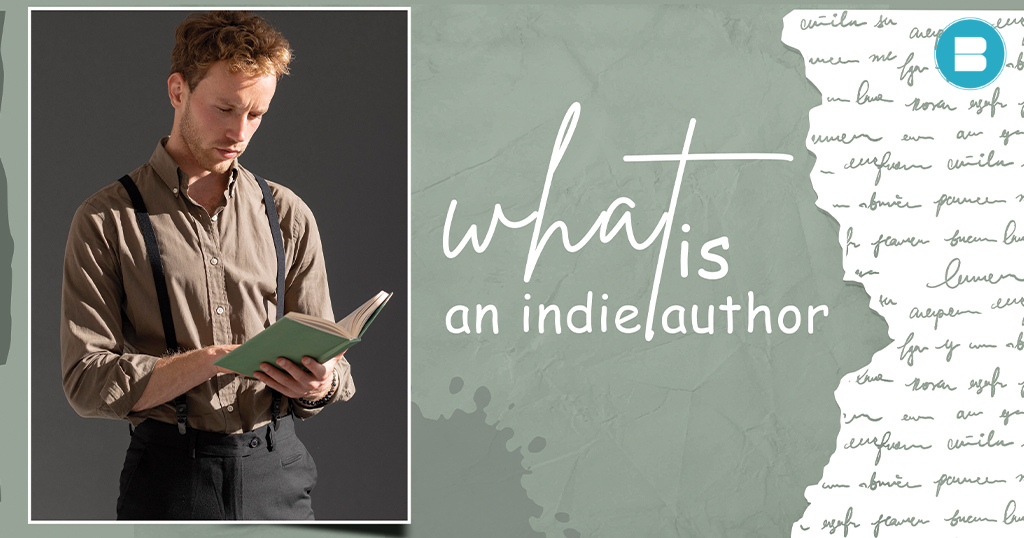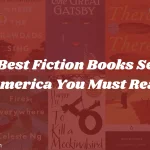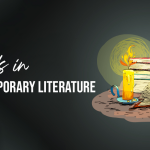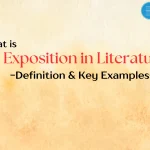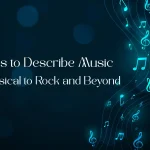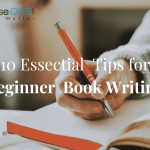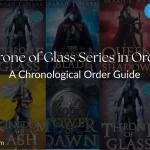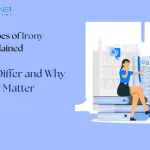Read and Get to know what is an Indie Author & How can you become one too. “Indie” is a term often used as an abbreviation for “independent.” It originated in the context of the music industry to describe artists or musicians who operate independently from major record labels or mainstream commercial success. Indie music typically refers to genres or styles that are alternative, non-mainstream, or outside the conventional pop music industry.
Read: Learn How to Self-Publish a Book Hassle Free Using BlueRoseONE DIY Platform.
Over time, the term “indie” has expanded beyond music and has been applied to other forms of art and entertainment, such as independent films, literature, video games, and even fashion. In these contexts, “indie” signifies a creative work or product that is produced outside of mainstream or corporate channels. It often emphasizes artistic freedom, creative expression, and a do-it-yourself (DIY) ethos.
What does "indie” author mean?
An independent author, sometimes known as an “indie author,” is a writer who self-publishes their work as opposed to using conventional publishing avenues. Without the help of a typical publishing firm or literary agency, independent authors are free to write and publish their novels. They often manage many aspects of the publication process themselves, including editing, cover design, formatting, and marketing.
With the introduction of digital publishing services like Amazon Kindle Direct Publishing (KDP) and Smashwords, which have made self-publishing more attainable and inexpensive, independent writers have grown in popularity and reputation. These platforms give authors the ability to distribute their works in print-on-demand paperbacks and digital formats (e-books).
Independent writers have greater control over their creative output and may keep a larger portion of the proceeds from book sales since they want to be independent. They are allowed to experiment with various genres, writing techniques, and specialised markets in order to appeal to certain reader interests. However, independent writers are also in charge of everything related to the success of their work, such as marketing, advertising, and establishing their author identity.
The indie author community is known for its strong sense of cooperation and support, with writers frequently exchanging tools, information, and experiences to advance one another’s careers. Through social media, blogging, author websites, participation in book fairs, conventions, and online book communities, many independent writers communicate with their readers.
While independent writers have the chance to reach readers directly through self-publishing, it also necessitates a lot of work in terms of writing quality, expert editing, book cover design, and marketing techniques to stand out in a crowded market. However, independent authors have the ability to succeed and appeal to a large audience with their works if they are committed, persistent, and focused on developing a devoted fan base.t
How did the concept of indie authors start?
With the development of self-publishing platforms and digital technologies, the notion of independent authors, often known as indie authors, developed. Authors traditionally had to rely on conventional publishing firms to produce and disseminate their novels before the internet and digital publishing were invented. These publishing firms controlled the majority of the publishing sector and had stringent hiring procedures.
However, due to the quick development of technology, particularly the expansion of e-books and online platforms, writers now have the option to forego conventional publishing channels and self-publish their works. The publishing industry saw a huge upheaval as a result, sparking the independent author movement.
The emergence of self-publishing websites like Amazon’s Kindle Direct Publishing (KDP) and Smashwords in the early 2000s is credited with the beginning of the independent author movement. These platforms gave authors the means to publish their books in digital form and make them accessible to a large audience worldwide.
Many aspiring authors were drawn to self-publishing because of how simple it is and because it has the potential to pay out bigger royalties than traditional publishing, which allows them to keep more of the profits from book sales.
Read: A Complete Guide on How to Self-Publish a Book in the UK.
As more authors welcomed the autonomy and adaptability provided by self-publishing, The indie author movement grew in popularity. Without being constrained by the rules and gatekeeping of conventional publishing firms, authors might produce and publish works according to their own terms.
Additionally, the development of social media and online communities was crucial to the success of independent authors. Direct communication with readers allowed authors to increase their fan base, get helpful feedback, and get encouragement. Independent authors have increasingly relied on online venues like Goodreads, blogs, and book review websites to spread their message and find new readers.
The idea of independent writers keeps changing as self-publishing platforms get better and more authors choose this alternate publishing path. Today’s independent writers have seen incredible success; some have even made bestseller lists and landed book agreements with established publishers. The movement has given writers the power to govern their writing careers and democratised the publishing sector, enabling a variety of voices and tales to be published.
How successful have Indie authors been?
Independent authors have had great success and have had a big effect on the publishing world. Although individual authors’ levels of success might vary, many independent authors have made outstanding progress, attracted a sizable following, and received widespread acclaim. Here are some significant details emphasising the success of independent authors:
Bestseller Status: On websites like Amazon, the New York Times, and USA Today, many independent writers have attained bestseller status. Their bestsellers have faced off against writers who have been formally published, demonstrating the financial viability of independently released books.
Increased Recognition: Independent authors are now better known and recognised in the literary community. Traditional publishing firms have found some independent authors, which has resulted in book agreements and expanded distribution options. The barriers between conventionally published and independently released works have been lowered as a result of this acknowledgment.
Independent authors benefit from preserving creative control over their works and receiving higher royalties. They are free to select their own cover art, establish their own prices, and own promotional tactics. Additionally, independent authors often earn higher royalties than authors who are conventionally published, enabling them a larger portion of the proceeds from book sales.
Read: List of 10 Most Famous Self-Published Authors of all Time.
Diverse and niche content has been produced by independent authors, including stories and voices that would not have been well-suited for traditional publication. They have filled a market the gap by exploring niche genres and catering to specific reader interests. This has increased the selection of material that is accessible and appeals to a wider range of readers.
Prospects for Entrepreneurship: Independent authors have taken advantage of business prospects by starting their own imprints, joining author collectives, and developing their own brands. They have mastered the business of publishing, from marketing and advertising to cultivating a following of devoted readers.
Digital platforms have made it possible for independent writers to reach a worldwide audience without the limitations of physical distribution. Independent writers may now reach readers all over the world thanks to e-books and print-on-demand services that have made books more accessible and inexpensive.
It is crucial to remember that success as an independent author involves commitment, perseverance, and smart marketing tactics. While some independent authors find great success, others may have less impressive sales. However, the independent author movement has clearly created new opportunities for writers to interact with readers, and share their tales, and realise their literary goals.
Indie authors in fiction
Here are some well-known independent fiction writers:
- Hugh Howey: Hugh Howey became incredibly well-known for his science fiction series “Wool.” The series, which started out as a short novella that was self-published, eventually became a best-selling trilogy. Due to Howey’s independent author popularity, a significant publication contract resulted.
- Andy Weir: Andy Weir first self-published his first book, “The Martian,” online before garnering popularity and getting a commercial publishing agreement. The novel went on to become a smash bestseller and was successfully turned into a movie.
- Young adult fantasy novelist Amanda Hocking is well-known in this field. She self-published the “Trylle Trilogy,” her first book series, and had incredible success, selling millions of copies. Eventually, a conventional publishing agreement resulted from her popularity.
- Bella Forrest is renowned for her well-liked young adult fantasy books including “A Shade of Vampire” and “The Gender Game.” She self-published her works and amassed a sizable fan base, emerging as one of the genre’s most prosperous independent authors.
- Best-selling author of thrillers and criminal fiction is Mark Dawson. To increase his following, he self-published his works and used internet marketing techniques. Since then, Dawson has developed into a strong supporter of self-published writers and has disseminated his expertise via a number of teaching tools.
- Jasinda Wilder is a romance writer who found considerable success as an independent author. She became well-known after her book “Falling into You” hit bestseller lists. Since then, she has independently published a number of popular romantic books.
- Known for his epic fantasy novels, such as the “Shadowdance” and “Paladins” series, is David Dalglish. He began as an independent author and built a devoted fan base before securing a conventional publishing agreement for several of his novels.
These are only a few instances of independent fiction writers who have achieved success outside of the mainstream publishing sector. With the growth of digital distribution and self-publishing platforms, many excellent authors may now reach a large audience without using conventional publishing channels.
Indie authors in non-fiction
- Tim Ferriss: Author and businessman Tim Ferriss is well-known. His first book, “The 4-Hour Workweek,” which he self-published and shot to fame, became a New York Times bestseller. Since then, Ferriss has published a number of other best-selling books in which he shares his knowledge of productivity, health, and personal growth.
- Chris Guillebeau: Chris Guillebeau is a writer and speaker whose books on business and unconventional living are well-known. His hit “The $100 Startup” was self-published and provided useful guidance on launching a firm with little money.
- Author and visual artist Austin Kleon is well-known for his books on creativity. His first book, “Steal Like an Artist,” which he self-published, became well-known for its perceptions on imagination, inspiration, and the skill of stealing ideas.
- The Subtle Art of Not Giving a F*ck, a book that Mark Manson self-published, helped him achieve international prominence. The unorthodox self-help advice in the book encourages readers to give priority to the things in life that are actually important. It rapidly became a success and gave Manson access to more publication possibilities.
- Former Navy SEAL Jocko Willink is a leadership expert who self-published his book, “Extreme Ownership.” The book, written in collaboration with Leif Babin, offers advice on efficient management and personal accountability. It received considerable recognition and provided Willink with major speaking and consulting opportunities.
- Cal Newport is an author and professor of computer science who focuses on issues including productivity, technology, and workplace culture. His self-published book “Deep Work,” which offers advice on how to do concentrated, distraction-free work in a hyperconnected society, attracted notice.
These independent nonfiction writers have proven they can reach a large audience and have a big influence with their self-published books. Their success demonstrates the expanding possibilities for authors to independently share their knowledge and experience while avoiding conventional publication channels.
Indie authors in poetry
Rupi Kaur: Rupi Kaur became well-known after self-publishing her poetry book, “Milk and Honey.” The book soon became a success and addressed themes of love, sorrow, healing, and femininity. Readers all across the world connected with Kaur’s genuine and honest writing, and she has subsequently released several popular poetry collections.
Author and poet Lang Leav is well-known for her self-published book “Love & Misadventure.” As a result of the enormous popularity of her moving poems on love, relationships, and self-discovery, she has now released many best-selling poetry collections.
Atticus: A poet using the alias Atticus became well-known on social media. Readers were enthralled by his collection of poems, “Love Her Wild,” which he self-published. Atticus has kept on publishing popular poetry anthologies, sometimes with his own pictures.
The poet Amanda Lovelace is renowned for her books of strong, inspirational poems that address issues of feminism, trauma, and resiliency. Her first book, “The Princess Saves Herself in This One,” which she self-published, became a hit. The “Women Are Some Kind of Magic” series and Lovelace’s subsequent works have also been favorably appreciated.
The work of poet and author Nikita Gill addresses mythology, feminism, and human development. She first became well-known as a result of her independently released poetry books including “Wild Embers” and “Your Soul Is a River.” Readers from all across the world have reacted well to Gill’s expressive poetry and use of vivid imagery.Sarah Kay is a spoken word artist who has become well-known for both her stirring performances and her independently released poetry collection, “B.” Her poetry explores subjects including love, identity, and societal problems. With her distinctive fusion of spoken word and poetry, Kay has developed a dedicated audience.
These independent poets have significantly improved the field by evoking strong emotional responses in readers with their self-published poems. They have embraced online forums and social media tools to expand their readership and position themselves as significant figures in modern poetry.
Indie culture is often associated with a grassroots approach, where artists, creators, and entrepreneurs strive to maintain creative control and authenticity in their work. It is seen as a way to challenge the mainstream and offer alternative perspectives and experiences to audiences.
Read: Here’s a list of 7 Best Time Management Books to Read on Kindle Unlimited.
In conclusion, indie authors play a significant role in today’s literary landscape. They are writers who choose to take control of their creative process and publish their work independently, outside of traditional publishing houses. The rise of self-publishing platforms and digital technology has empowered these authors to bring their stories to readers directly, bypassing the traditional gatekeepers of the publishing industry.
Publish your book for free with BlueRoseONE and become a bestselling author. Don’t let your dream of becoming an author fade away, grab the opportunity now and publish your book – be it fiction, non fiction, poetry or more.

